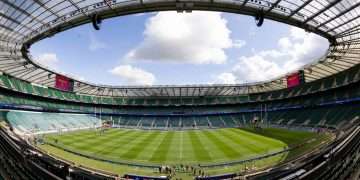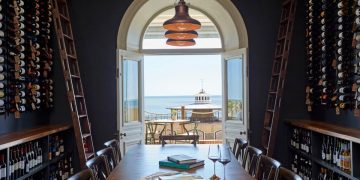When it comes to fire protection, commercial property owners often balance two competing priorities: safety and cost. SmartMist Fire Ltd appears to understand this trade-off, and they promote water mist systems as a way to deliver strong fire suppression performance without many of the downsides of traditional sprinkler systems. Below, I explore how they achieve cost effectiveness, what it means for businesses, and what to watch out for.
What Is SmartMist Fire Offering
From their site, SmartMist Fire Ltd provides water mist fire suppression systems for both new builds and retrofit in commercial settings (offices, hotels, care homes, etc.). Their systems are designed to comply with BS 8458:2015, which is the UK standard for fixed residential/domestic water mist systems, but they also apply the technology in commercial environments.
Key technical elements:
- Fine water droplets (high pressure, small diameter) for faster cooling and better coverage of flame areas.
- Lower water flow rates than sprinklers. For example, SmartMist claims their water mist system uses ~12 liters/min per relevant nozzle vs ~60 liters/min (typical sprinklers) for comparable suppression effect.
- Use of mains water supply where possible; in other cases, dedicated supply with priority valves etc., to ensure compliance and performance without needing very large water storage.
How Cost Savings Arise
SmartMist achieves cost effectiveness for commercial clients in several interconnected ways:
Real Claims from SmartMist About Savings
SmartMist makes some fairly concrete value propositions:
- They assert their mist systems can use 70 % less water than traditional sprinkler systems in commercial properties, which directly reduces both water cost and property damage in the event of activation.
- Reduced clean-up time after a fire incident is often mentioned as a cost saving. Less water means less residual moisture, less drying, less mould or secondary damage.
- They also highlight easier retrofits, meaning less disruption cost, especially in properties which were not originally built with heavy sprinkler infrastructure in mind. This can avoid large remodeling costs.
Fire suppression systems for kitchen
Fire suppression systems for kitchens are essential safety installations that address one of the most common fire risks: cooking. Unlike standard sprinklers, these systems are specifically engineered to tackle grease and oil fires. They deploy either fine water mist or chemical agents to cool flames, smother vapors, and stop re-ignition. Automatic activation ensures rapid response without human intervention, minimizing damage and downtime. Modern systems are compact, easy to maintain, and can be tailored to commercial or residential kitchens. By meeting fire safety standards, they not only safeguard lives but also ensure compliance, protecting property owners from regulatory or insurance complications.
commercial water mist system
Commercial water-mist systems use high-pressure pumps and precision nozzles to release ultra-fine water droplets that cool fires rapidly, displace oxygen, and limit fire spread—while using far less water than conventional sprinkler systems. SmartMist Fire, for example, operates its mist systems at around 80-90 bar, combining efficient suppression with lower risk of water damage in commercial spaces. These systems are compact, easier to retrofit, and often more acceptable under UK fire safety standards. They’re ideal for offices, care homes, hotels or any environment with sensitive equipment or finishes. Fast activation, certified components, regular maintenance, and compliance with British Standards are key for reliable performance.
Limits, Trade-Offs & What Businesses Should Confirm
To ensure the costs stay low and the system performs as promised, commercial clients should check:
- Correct design to standard: Flow rates, nozzle spacing, pressure must match BS 8458 or other relevant standards. Poorly designed systems may reduce effectiveness, prompt false activations, or fail inspections. SmartMist emphasises following BS-8458.
- Water supply reliability: If mains water is used, is it adequate under all conditions? If the supply is shared, is there a priority mechanism? Without reliable supply or backup, performance drops.
- Upfront vs lifecycle costs: While water mist systems may cost a bit more up front (especially for pumps, specialized nozzles, perhaps higher pressure equipment), over time savings on water bills, damage repair, insurance claims, downtime etc. can outweigh the extra. Businesses should run cost/benefit over many years.
- Maintenance and warranty: Ensuring the provider offers good service, maintenance contracts, clear documentation, guarantees. Components must be accredited. SmartMist’s accreditations (BSi, IWMA etc.) help, but clients should request proof.
- Insurance & regulatory acceptance: Check that insurance companies will accept these systems; also confirm Building Control or local fire safety authorities accept mist systems in place of or alongside sprinklers. SmartMist highlights that their systems are accredited and “Building Control Approved.”
Conclusion
SmartMist Fire Ltd is making water mist technology a serious, cost-effective option for commercial fire suppression. By leveraging lower water use, faster response times, and modern installation techniques, they can reduce both direct costs (water damage, repair) and indirect costs (downtime, cleaning, insurance). For many commercial property owners—especially those with sensitive interiors, constrained access, or retrofit challengeswater mist offers real financial and practical benefits, provided the system is properly designed, installed, and maintained.
If you like, I can pull together a side-by-side cost comparison (mist vs sprinkler) for a few commercial property types (office, hotel, care home) using SmartMist’s published data.































